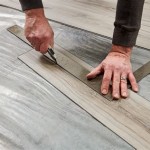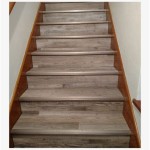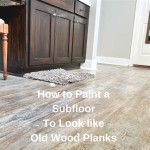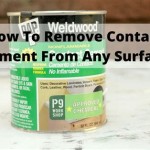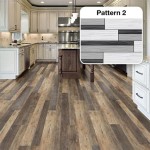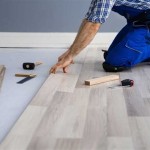A Renewable Source of Flooring: Fossilized Bamboo Fiber
The demand for sustainable building materials continues to rise as environmental awareness increases. Among the various eco-friendly options, fossilized bamboo fiber flooring stands out as a promising alternative to traditional hardwood and laminate flooring. This innovative flooring material combines the natural beauty of bamboo with enhanced durability and water resistance, thanks to a unique fossilization process.
What is Fossilized Bamboo Fiber Flooring?
Fossilized bamboo fiber flooring utilizes bamboo culms harvested at maturity, typically around five to seven years old. After harvesting, the bamboo undergoes a specialized process that compresses and heats the fibers under high pressure. This process, reminiscent of the natural fossilization of organic matter over millennia, drastically alters the bamboo's cellular structure. The resulting material is dense, hard, and significantly less susceptible to moisture damage than traditional bamboo flooring.
The Fossilization Process
The key to fossilized bamboo flooring's remarkable characteristics lies in the controlled "fossilization" process. The harvested bamboo is first subjected to intense heat and pressure, which removes excess sugars and starches. This step significantly reduces the bamboo's susceptibility to insects and mold. Subsequently, the bamboo fibers are compacted under extreme pressure, fusing them together into a solid, dense block. Resin is often added during this process to further enhance the material's durability and water resistance. The final product is a remarkably stable and strong flooring material.
Advantages of Fossilized Bamboo Flooring
Fossilized bamboo flooring offers a range of benefits that make it a compelling choice for homeowners and builders seeking sustainable and high-performance flooring options.
Durability and Hardness
The fossilization process significantly increases the hardness and density of bamboo, making it more resistant to dents, scratches, and wear and tear compared to traditional bamboo or even some hardwoods. This durability translates into a longer lifespan for the flooring, reducing the need for frequent replacements.
Water Resistance
The dense, compacted nature of fossilized bamboo, combined with the addition of resin during processing, gives it superior water resistance. While no wood flooring is entirely waterproof, fossilized bamboo stands up remarkably well to moisture, making it suitable for kitchens, bathrooms, and other areas prone to spills and humidity.
Sustainability
Bamboo is a rapidly renewable resource, growing much faster than hardwood trees. Harvesting mature bamboo culms does not kill the plant, allowing for continuous harvesting without damaging the ecosystem. This rapid renewability, combined with the long lifespan of fossilized bamboo flooring, makes it a highly sustainable flooring choice.
Aesthetic Appeal
Fossilized bamboo flooring retains the natural beauty of bamboo, offering a warm and inviting aesthetic. The manufacturing process allows for variations in color and texture, providing a range of design options to suit different preferences and interior styles. From light, natural tones to rich, dark hues, fossilized bamboo can complement a variety of design schemes.
Easy Installation and Maintenance
Like other engineered wood flooring products, fossilized bamboo flooring is typically available in planks with click-lock installation systems, making it relatively easy to install, even for DIY enthusiasts. Maintenance is also straightforward, requiring regular sweeping or vacuuming and occasional damp mopping.
Cost-Effectiveness
While the initial cost of fossilized bamboo flooring might be slightly higher than traditional bamboo, its superior durability and longevity can lead to long-term cost savings. Reduced maintenance and infrequent replacements contribute to the overall cost-effectiveness of this flooring option.
Considerations for Fossilized Bamboo Flooring
While fossilized bamboo flooring offers numerous advantages, it is important to consider a few factors before making a purchase. The hardness of the material, while a benefit in terms of durability, can also make it slightly harder underfoot compared to some other flooring types. Additionally, the manufacturing process, although designed to minimize environmental impact, still requires energy consumption. Comparing the environmental footprint of different flooring options is essential for making an informed decision.

Fossillized Bamboo Flooring Reviews

Fossillized Bamboo Flooring Reviews

Fossillized Bamboo Flooring Reviews

Fossillized Bamboo Flooring Reviews

Bamboo Carbon Smart Materials Palette

Antique Java Bamboo Flooring Design Architecture

Sunhouse Floor Iso Fsc Java Bamboo Flooring Hdf Vertical Made In Com

Sample Natural Cali Bamboo Solid Flooring Yf Alaska

Fossillized Bamboo Flooring Reviews

Bamboo Flooring For A Beautiful Eco Friendly Home Goods
See Also
